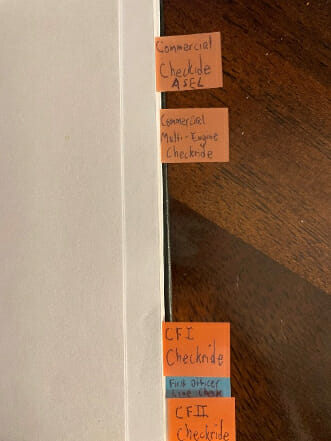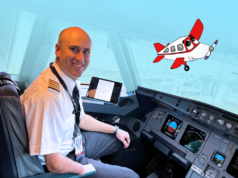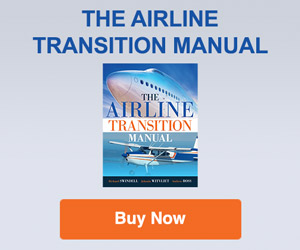
The events of the past year have once again brought to light how quickly things can change in aviation. Just months after airlines posted record profits and announced aggressive hiring plans, those same airlines were mailing out furlough notices. Unfortunately, a few were forced to close their doors completely. Yet here we are, just about a year since Covid-19 was declared a pandemic, and airlines are beginning to hire once again. The news regarding our nation’s recovery from the COVID-19 pandemic is finally trending in a positive direction. In early March I watched a major news network report on the risks of a pilot shortage hindering airline recovery, and I honestly could not believe I was seeing the words “pilot” and “shortage” together again. Depending on your longevity in the industry, this latest downturn has either introduced you to, or been a stark reminder of, the cyclical nature of our industry. Now I do not want to get ahead of myself, as our continued recovery hinges on many things, but I happily accept the positive news and look optimistically towards the future. Airlines have begun preparing for greater travel numbers this summer and beyond by adding routes, increasing system capacity, and announcing the recall of furloughed employees. Just as the airlines are preparing for their future, you should be preparing for yours. The appreciated change of pace within the industry should have everyone thinking, “Am I ready for the next hiring wave?”
At Aero Crew News, we are happy to introduce a new monthly column that will offer insights into hiring trends, highlight different career paths, and offer advice on career and interview preparation. The goal of the column titled Careers is to focus on career progression and professional growth. In conjunction with the great information found in The Grid on the Aero Crew News website, we hope to help readers at all stages prepare for the next step in their aviation career. Every pilot’s journey between their first flight lesson and their dream position is different and we hope to provide guidance that will make the ride just a little smoother.
This month we deal with a few actions that all pilots can take now to better prepare themselves for an interview. Taking advantage of downtime within your schedule is crucial to ensuring that you are ready when an interview opportunity presents itself. Though nothing in this industry is guaranteed, the recent hiring announcements appear to indicate a bright future as the industry recovers from the pandemic. Pilot interviews require significant preparation and due to the overall lack of hiring in 2020, the competition for positions will be strong in all facets of the industry. For three years as a pilot recruiter, I developed a great appreciation for the hiring process. Each part, from the initial application to the knowledge test to human resources’ interview, has its own unique challenges designed to test pilots and verify that they will be a good addition to the company. If you are looking to be a part of this hiring wave, I recommend beginning the preparation process now and using your free time productively. Admittedly, while it is too early to suggest that the latest announcements constitute the beginning of a “hiring wave,” preparing like there will be one will only benefit you. Personally, I would rather dedicate time to be fully prepared for hiring that does not materialize than be ill prepared for hiring that does come. Even before completing a single application, there are numerous actions you can take that will set you up for success and give you a leg up as the application windows open.
All applications for pilot positions require a breakdown of one’s flight hours so recruiters and interviewers can gauge overall experience and confirm that minimum requirements are met. Every pilot understands that this is part of the application process, but many still wait until they are actively applying for a position to address any logbook errors. Imagine dedicating hours to an application, only to realize right before submitting that your single engine flight time and multi engine flight time do not correctly add up to your total time. What a terrible time to discover that error! You certainly do not want to submit an application with such an error, so you are now forced to look through your logbooks to locate and correct the issue. The stress of that situation, not to mention the delay in application submission, can be completely avoided by taking the time now to find and correct any errors. Once all errors are corrected, entering your experience in an application will be a breeze.


On the topic of logbooks, I suggest that pilots begin to think about their logbook’s overall appearance. For those with paper logbooks, are all errors properly noted and corrected per FAA recommendations? For those with electronic logbooks, what format are you going to use when printing it before an interview? Thinking through these types of questions now will save you time later and help you to avoid hectic, last minute trips to a FedEx printing store. Additionally, you can begin tabbing all stage checks and checkrides on paper logbooks and noting the dates of those flight events for electronic logbooks to be tabbed after printing. If you are pursuing a position with a regional airline or any company that will require you to obtain your Airline Transport Pilot certificate, I suggest tabbing all Airline Transport Pilot eligibility requirements as well. As you surpass different requirements (100 hours of night flight, 75 hours of instrument flight, etc.), I recommend tabbing the flight and indicating which requirement was met. Tabbing all checkrides, stage checks, and Airline Transport Pilot certificate eligibility requirements will serve two purposes. First, it will you allow you to gauge your flight-time progress and ensure that you will in fact be qualified to begin training with an airline. It is easy to focus on the total flight time and forget about all the other requirements for an Airline Transport Pilot certificate. You do not want to find yourself in a position where you believe you are qualified for a certificate, but then realize you are short on hours for one of the requirements. During an airline interview process, your logbook will be collected and reviewed by an interviewer whose job it is to determine that you are legally qualified for the role. You want to walk into the interview organized and absolutely sure of your qualifications. Having these requirements tabbed and providing well-maintained logbooks will make a great first impression and allow the interviewers to easily verify that the flight experience you have submitted on your application is correct. Notice the image of my paper logbook that I have presented in several interviews over the course of my career. This section contains tabs for multiple checkrides and a Part 121 First Officer Line Check.

There is no better time than the present to begin preparing for your next interview. If you wait for the phone to ring with an interview request to begin the preparation process, you will quickly find yourself behind schedule. We will dive into many more interview preparation tasks in future issues, but it is important to note that those mentioned in this article are one-and-done actions, meaning that they do not need to be readdressed once completed the first time. Once errors in your logbook are corrected and all your flight times add up correctly, that will remain the case so long as future flights are logged accurately. Once you tab a checkride or stage check, or make note of those dates for electronic logbooks, that action is done and does not need to be repeated. These are tasks that should be completed for any pilot interview, which provides even more reason to get it done today so that you need not give it a second thought. As with financial investments, the effort you put in today will continue to pay dividends in the future.
We developed the idea for this new column several months ago, and I began writing this first article. The initial draft of the inaugural article looked quite different, as the industry was very much struggling, and a recovery was still off into the future. My approach was within the then–current industry climate and in my mind, I wanted to discuss opportunities to take advantage of the hiring lull to put oneself in a position to be ready for the next round of hiring. Ironically enough, in the days following the completion of that draft, numerous airlines announced hiring plans. Since then, I have had to return to update this article numerous times as airline after airline announced growth. In the span of a month, the industry outlook improved so greatly that what I had written only a few weeks prior now seemed outdated. What started out titled Preparing for Future Hiring was updated to be called, Back in Demand. If that is not an impressive example of the cyclical nature of the industry, then I don’t know what is. Opportunities to utilize your downtime to better position yourself for hiring are even more important now that application windows have opened, which will be followed soon by new-hire classes.
I am very hopeful that this is the beginning of a strong industry recovery, and I hope you will continue to tune in each month to our new column, Careers.






















































Hello Justin, great article. This is very motivational and helpful. I’m in a “zero experience” position about hiring processes, I would like to contact you on linkedin, mine is: Jorge Sierra Rodríguez.
Thanks!